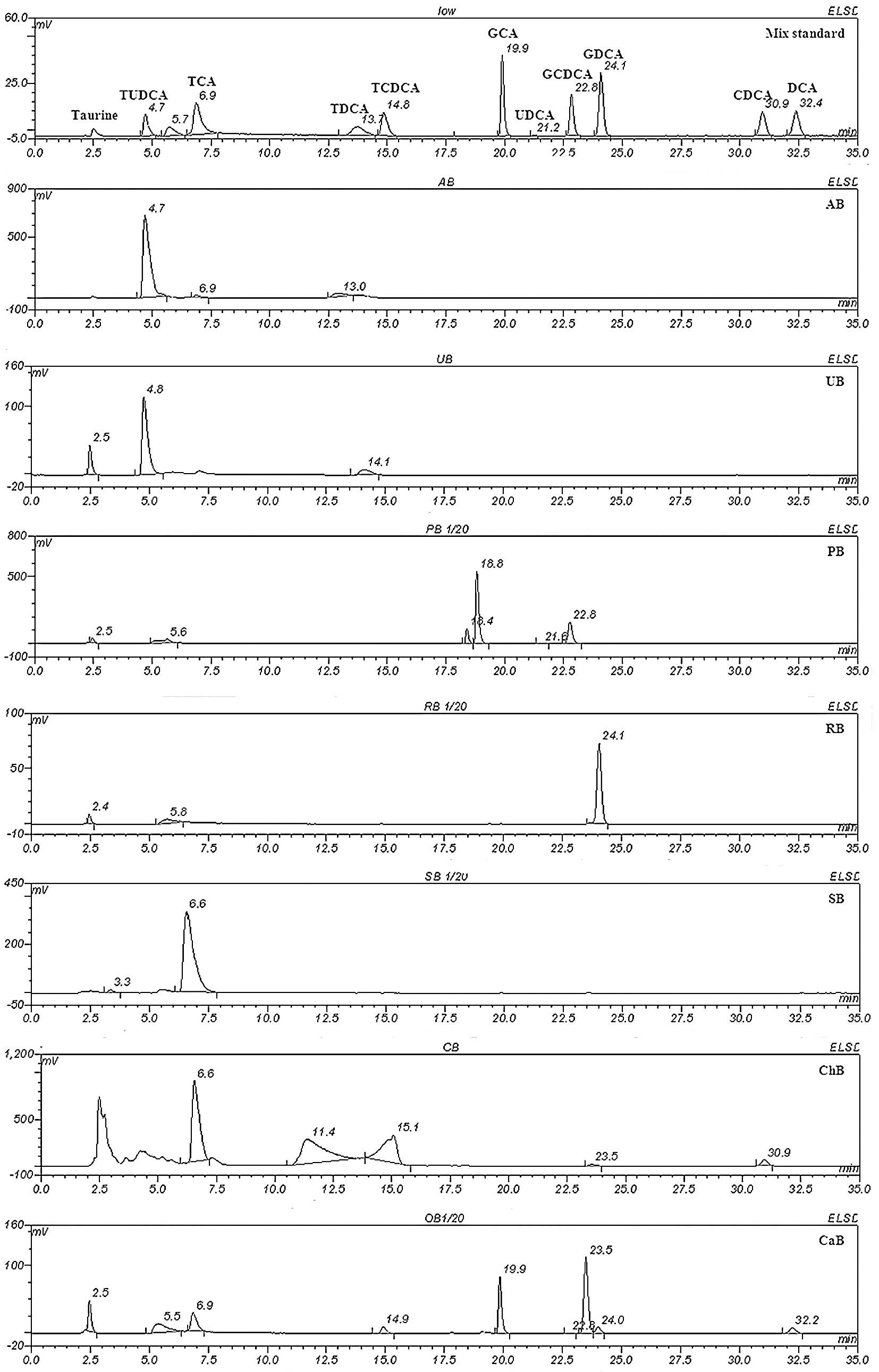Chemical and biological analysis of active free and conjugated bile acids in animal bile using HPLC-ELSD and MTT methods
- Authors:
- Published online on: December 2, 2010 https://doi.org/10.3892/etm.2010.178
- Pages: 125-130
Metrics: Total
Views: 0 (Spandidos Publications: | PMC Statistics: )
Total PDF Downloads: 0 (Spandidos Publications: | PMC Statistics: )
Abstract
The aim of the present study was to determine the chemical composition and in vitro cytotoxic activity of seven bile samples and bile acids using the high-performance liquid chromatography (HPLC)-evaporative light scattering detector (ELSD) method. Free and conjugated bile acid standards were used to identify and quantify the chemical components of the seven animal bile samples. The MTT assay was used to determine the cytotoxic effect of the animal bile samples and the free and conjugated bile acids on hepatocellular carcinoma MHCC97-L cells. Chemical analysis revealed that the bile samples from the different animals shared little similarity in terms of their composition. A cell viability assay revealed that cattle bile, as well as its major components, DCA, CDCA and TCDCA, exhibited a marked cytotoxic effect on the hepatocellular carcinoma MHCC97-L cells. The bear bile samples that originated from the Asian black bear and the American black bear contained a unique component, TUDCA, which distinguished them from the other animal bile, though their inhibitory action on MHCC97-L cells was not markedly distinct. The present study reveals that cattle bile may be a potential alternative to bear bile for hepatocarcinoma therapy.














